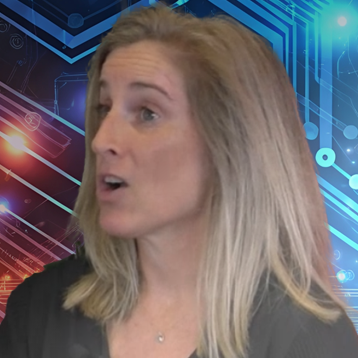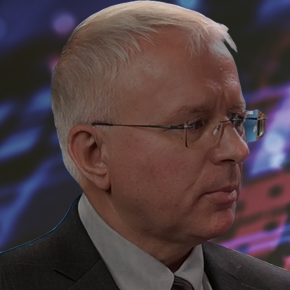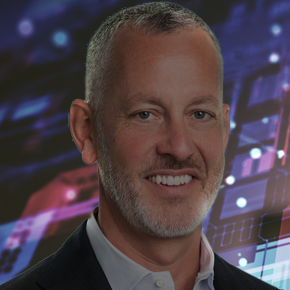July 6, 2022
Pain Points for Manufacturing, and the Digital Rx

Transcript
Leah Archibald: Over the past decade, traditional manufacturing has faced one disruption after another. Small digitally agile competitors have found ways to steal consumer demand away from the market leaders. Then disruptions in the supply chain ate away at the other side of the equation, until manufacturers worried whether they could sustain enough cash flow to keep the doors open. Meanwhile new disruptions loom on the horizon in the form of regulations and sustainability concerns.
What’s the prescription for this constellation of pain points? Is it agile design? Supplier collaboration? Global cost data? My guest today says: all of the above, swallowed together with a big dose of reality.
Philippe Adam is the CMO of aPriori. He has watched the digital transformation of the marketplace from VP-level positions at Oracle, McAfee, and PTC. Today he talks to manufacturing executives about the biggest challenges they face, and the opportunities to solve them through digital technology. Philippe Adam, welcome to the podcast. Let’s start with this question: What are the biggest pain points facing manufacturers today?
Philippe Adam: That’s a good question. When I look at all the discussions we’ve been having with our customers for quite a while now, there are three topics that come up systematically during our interactions, and they are all around disruptions.
Number one is what I would call digital disruption, which refers to the fact that our customers see more and more competitors that they were not seeing in the last five years of business. These competitors come into the market with new products. They’re innovative – leveraging digital technologies. And they’re forcing our customers to innovate better. The main question they have is: How can we optimize our product and our product development process to stay competitive? That’s what I call digital disruption.
Leah Archibald: Can you give me an example of digital disruption?
Philippe Adam: Think about the automotive industry. Who would have said 10 years ago that Tesla would come up with a new type of vehicle that would dominate the market? Meanwhile, the existing brands like General Motors, Mercedes and BMW need to react to make sure that they don’t lose market share. That’s an example of digital disruption. How can you continue to optimize your product development process to stay competitive and stay ahead of the curve? It is very, very difficult to do.
Leah Archibald: It’s even more difficult to do, I imagine, in the midst of global instability around supply chain.
Philippe Adam: Correct. So, the second major disruption our customers are talking about is the global supply chain. How can they build a resilient and efficient industrial supply chain? That is a big disruption on top of the previous one.
Leah Archibald: Are you going to tell me there’s a third disruption too?
Philippe Adam: Yes, the third disrupting coming is regulation. There are a lot of new regulations, and the one which is most hot on the agenda for our customers is sustainability. This is going to change the game for most manufacturers. They will now need to minimize their carbon footprint, consume less water, but continue to deliver the same type of products with the same type of innovation to their customers.
That’s a major, major disruption. And so when you put all three disruptions together it represents a pretty significant change for most of the companies we work with.
Leah Archibald: Now manufacturers haven’t taken this problem lying down. They’ve implemented solutions to mitigate the harm from disruptions. They’ve pushed their designers to work in CAD and use a PLM system to better collaborate with one another. They’ve put in ERP systems to better manage the supply of their components. Are these investments paying off? Or is there still something lacking?
Philippe Adam: You would assume that with all the investment that has been made in software solutions – whether it’s ERP, or CAD systems to design better and faster, or PLM systems – that companies would be ready. But those systems cannot help them overcome such disruptions, or even anticipate such disruptions. If you look at all those investments that have been made, each has been made in what I would call a silo. They each support individual functions to do their job better. They support design engineering teams to design innovative products better and faster. Or they help the sourcing teams to optimize and automate the sourcing process. But they don’t help the overall team achieve their objectives to address disruptions.
Leah Archibald: Because each function in the team is siloed?
Philippe Adam: Because what they’re lacking is valuable insights that should be shared between teams to address and anticipate disruptions. This is where aPriori can help significantly. When you look at what we do, we deliver advanced manufacturing insights by leveraging innovative digital factory models.
This model support teams in a new way. It can, for example, help engineering teams to optimize the product price-performance ratio by suggesting alternatives in the design to reduce cost or to improve sustainability or to reduce carbon footprint or improve manufacturing time. That does not exist in any CAD system. That does not exist in any PLM or ERP systems.
Additionally, those insights, as soon as they start to be shared, can be injected into the existing system so the system gets smarter, leveraging more insights as we go.
Leah Archibald: How does a modeling tool help you address the multiple disruptions that you mentioned: innovative competition, supply chain disruptions, and sustainability regulation?
Philippe Adam: When we talk about those three disruptions, they are linked with each other, the same way that cost and sustainability and manufacturability are linked. Without an overall insights tool, decreasing all three at the same time is very difficult to do. Let’s say you want to minimize your cost to achieve a specific carbon footprint objective. Your manufacturability would be affected by that. Is that an option that the entire team wants based on the corporate objectives? Or is there another strategy that is more suitable for the corporate objective? Without an overall insight tool, it’s impossible to know. aPriori gets the team to work together. This is done through our collaborative platform, and through our models that guide each of the functions together to meet the corporate objectives.
Leah Archibald: I hear you saying that digital models give teams better data to make design and sourcing decisions. But what if I say that design and sourcing professionals already have enough on their plate as it is. They don’t have time to collaborate on differential diagnoses for every single stock part that might be held up in a disrupted supply chain.
Philippe Adam: The beauty of what we do is that those models can run on an ongoing basis. They run automatically within the CAD systems. They integrate automatically with the PLM system. So as soon as you have a new bill of materials to produce a new product, you can automatically run exactly the same type of process in the digital factory and it will flag what potentially could put this product out of an ideal price-performance ratio, or out of a carbon footprint goal, or out of a time-to-market goal. And so every time you’re going to start to produce a new product, you have this automated way of doing things.
aPriori also scrutinizes every product you have, every product line you have, to continuously optimize every parameter based on your corporate objectives. And that’s what makes us very unique: Driving those insights through models that not only help people collaborate on decisions, but also help them to sustain focus on their objectives over time.
Leah Archibald: Cashflow has been a big concern for manufacturers in crisis. What are the drivers here, and how can manufacturers recover their health when it comes to cash flow?
Philippe Adam: One of the drivers for cashflow challenges is the fact that the supply chain is completely disrupted. Companies continue to take orders, but they cannot deliver on them in the same way anymore. They were going to China, but now China is closed. They were going to other countries, but now with the cost of transportation, it’s not affordable to do so. So, the question becomes: where should I produce those products to quickly minimize my backlog and generate cashflow? You need to multiply the number of suppliers, but keep the price at the same level.
Here we can help a lot with our solutions. For example, we can help the sourcing team go automatically to any type of supplier and ask if they can deliver those kinds of products on time. Dealing with new suppliers is very complex, because suppliers don’t have the visibility on what the sourcing team wants them to do. And so, what we do is we facilitate that communication with the collaboration part of our solutions. We help sourcing move a 3D model coming from a design team to their real-time suppliers. So, with aPriori you remove a lot of those challenges that take a lot of time back and forth. You end up with a very smooth process where everybody collaborates.
Leah Archibald: So, you’re saying that your prescription for a combination of information and collaboration can solve multiple problems at the same time.
Philippe Adam: We’re not doing just one thing. We’re not just helping sourcing teams to be better at finding the right cost material to build a product. We also help designers find alternatives to improve the cost of manufacturing. We help the sourcing teams find the best suppliers that not only achieve a cost target, but also align with the carbon footprint that is required for a company to be compliant with their sustainability reporting. We can do all this because we are calculating insights that do not exist in any other systems. We help them to go three or four or ten steps further because get to the hidden cost drivers that nobody else is able to find because they are deep. With aPriori, a lot more is possible.
Leah Archibald: Philippe Adam, thank you for talking with me.
Philippe Adam: Thank you very much, Leah.







